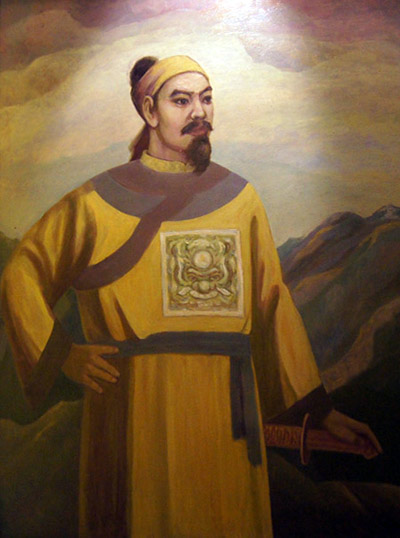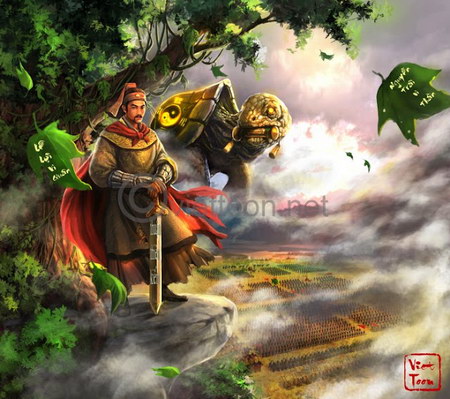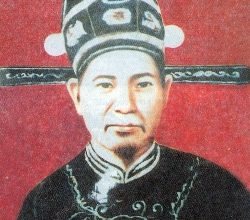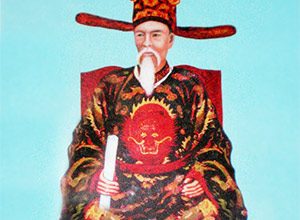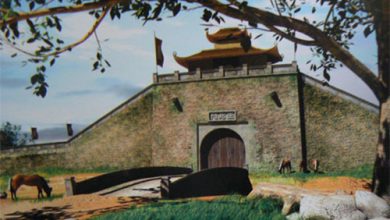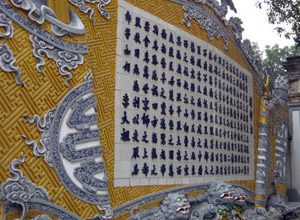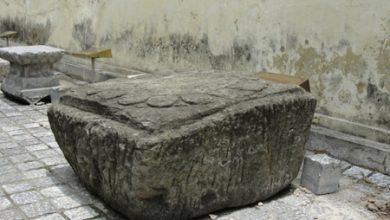How Le Loi took over Dong Quan Citadel?
Le Loi was born on 10/09/1385 in Lam Son (Tho Xuan District, Thanh Hoa province) in a wealthy family. Inheriting the patrimony from his father, Le Loi quickly became a widely respected notable in the area.
Under Ming Dynasty’s domination, Thang Long was renamed as Dong Quan to imply that it was a region of the Ming Dynasty, not the capital of an independent country.
Not withstanding the shame of losing the country, Le Loi was willing to leave behind the prosperous and comfortable life and was determined to rise up. During the time in Lam Son, Le Loi “well treated new guests, gathered refugees, fed masterminds and helped tthe poor.” Soon, the reputation of Le Loi was heard everywhere, more and more heroes throughout the country followed. In 1418, Le Loi officially raised the flag of revolt. Then Le Loi led the insurgent army and defeated Ming’s generals and Vietnamese generals who helped the Ming. More citadels were under the control of Le Loi. After the forces were powerful enough, Le Loi directly led the troops to attack Dong Quan. It was considered to be the campaign deciding the success or failure of Lam Son insurgents in an effort to regain their independence.
At night on November 22nd, 1426, the campaign to regain Dong Quan started with an ambush to three sides of this citadel. The troops attacking the eastern side was led by Tran Nguyen Han; the western side by Dinh Le. The main troops attacking the southern side was led by Le Loi himself. After this raid, all the Ming’s barracks outside of Dong Quan were destroyed; the survivals of the Ming had to retreat into the citadel and entrenched.
Le Loi sent troops to surround day and night, both attacked and implemented psychological warfare to persuade the Ming to surrender. The Ming’s generals Vuong Thong and Son Tho lost all the battles, became “frustrated, discouraged, lack of subterfuge and reinforcements; the situation became more grievous. Vuong Thong then sent letters to implore to draw and withdraw the army back to his country”.
However, clearly knowing Vuong Thong’s conspiracy of waiting for reinforcements, Le Loi and Nguyen Trai still tightly besieged and prevented any movement or supply into the citadel.
To avoid bloodshed, Nguyen Trai wrote many letters, analyzing the situation and pursuading the Ming’s army to surrender. He also pointed put the conspiracy of Vuong Thong so that he understood that he could not deceive the insurgents. However, Vuong Thong still stubbornly entrenched in the citadel.
In early 1427, the Ming sent 15 thousand reinforcements to save Dong Quan. This was the largest reinforcements among the 9 times of sending reinforcements by the Ming throughout the 20 years of domination in Dai Viet. This shows that the Ming spared no effort to maintain their domination.
With the policy of “Citadel siege and reinforcements killing”, Lam Son insurgent army on one hand tightened the siege in Dong Quan, on the other hand, sent military elites to ambush and combat the Ming’s reinforcements on the way to Dong Quan. As a result, 15 thousand reinforcements of Ming Dynasty led by Lieu Thang and Moc Thanh were crushed at the border.
The victory over the reinforcements made the position of Lam Son insurgent army much higher. With such position and power, Dong Quan will be defeated in only one battle. However, because he did not want to cost the blood of the two soldiers, Le Loi still pursued the policy of pursuading Vuong Thong to surrender. To show Vuong Thong that he could not look to anything from the reinforcements, Le Loi showed the Ming’s captured generals Thoi Tu and Hoang Phuc and the seals of generals Lieu Thang, Ly Khanh and Hoang Phuc before him. At the same time, Le Loi directed to maintain the siege and prepared for the battle of the total forces in case Vuong Thong still entrenched in the citadel.
Seeing that he could not rely on luck to turn over the situation, Vuong Thong accepted to attend the Dong Quan oath ceremony and pledged to withdraw all the troops, ending a 20 year failure in trying to dominate Dai Viet by Ming Dynasty.
The strategy of Le Loi and Nguyen Trai in pursuading Vuong Thong to surrender is considered very flexible and smart. Along the landslide victory, Lam Son insurgents showed to Ming Dynasty that they would not be able to occupy Dai Viet for a long time. Dai Viet army and people was resolute and had enough power to crush any army invasion. On the other hand, with a flexible diplomatic letter, Lam Son insurgents helped the Ming to keep face after the failures on the battlefield in Dai Viet. Thus, the relationship was established between the two countries, opening up a long-term peace.
When Le Loi took over the citadel, the country started to develop strongly again. The country was clear of invaders; Le Loi crown himself to the throne, taking the official name of the country Dai Viet; Dong Quan was changed to Dong Kinh (Eastern Imperial Citadel). Thang Long – Dong Kinh resumed the role of “the most capital of kings forever.”

